Key Takeaways:
- Machine availability measures the percentage of time equipment is available for production.
- High machine availability is critical for maintaining consistent production output and minimizing downtime.
- Regular maintenance and quick issue resolution are essential strategies for maximizing machine availability.
Keeping equipment running efficiently requires managing a dynamic balance in uptime, run time, fully productive time, and a myriad of other factors. Get it right, and a finished product can be produced at the lowest cost and highest efficiency. Get it wrong, and plant performance suffers from unplanned downtime, unplanned maintenance, and a high failure rate.
These variables are all part of machine availability. In all production environments, increasing availability to capture fully productive time is paramount to success.
What is Machine Availability?
Machine availability, or uptime, is the total amount of time a machine actually runs versus the time it was scheduled to run. Availability is the percentage of time a machine is in operation.
The scheduled time is based on understanding available capacity, having the raw materials on hand in appropriate quantities, and having the staff and sales orders required to run.
Downtime can slow or stop the machine during this scheduled time. Total downtime includes preventive maintenance, changeovers, and other controlled, known variables. Unplanned downtime means breakage, quality fallout, jams, or other unpredicted stoppages.
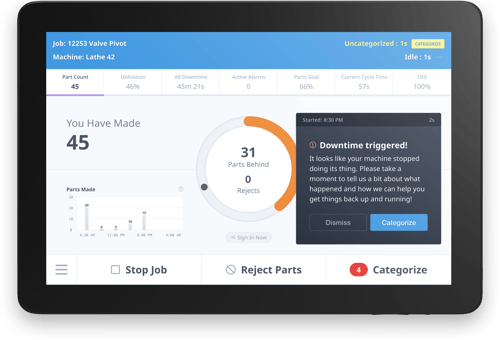 When a downtime event occurs, a MachineMetrics tablet at the machine prompts the operator to categorize the downtime event.
When a downtime event occurs, a MachineMetrics tablet at the machine prompts the operator to categorize the downtime event.
For example, a machine could be scheduled to run for eight hours and only be active for six hours. In this case, the availability score for the machine is 75%.
All manufacturing operations should measure availability and downtime, taking into account the duration and reason for downtime. However, if this is tracked by hand, it is likely to be highly inaccurate, severely delayed, and far less actionable.
The Function of Machine Availability
Machine availability is a basic but manufacturing KPI. By measuring the time, duration, and reason for downtime, availability is used as an "anchor." Understanding availability, the utilization of particular equipment, and why it does – or doesn't – run helps compile other KPIs to optimize processes at the machine or plant level.
As data is captured for downtime, variables like maximum time, actual time, failure rate, and planned production time can directly impact how equipment performs against overall business objectives and how decisions are made by staff and management.
Plug-and-play Machine Connectivity
Machine availability is one of three KPIs used to determine Overall Equipment Effectiveness (OEE). The other two KPIs are performance and quality, which we'll discuss below. Each KPI has its own formula and helps manufacturers understand the efficiency of their operation while identifying processes that require optimization.
| Case Study: Using MachineMetrics, Carolina Precision was able to identify what was causing downtime and leveraged Pareto charts to save $1.5 Million in the first year. Read the full story. |
What is the Calculation for Machine Availability?
Machine availability is calculated as:
Availability = Run Time / Planned Production Time
For example, if a machine runs for 8 hours, with 4 hours of downtime, during a 12-hour shift, then the availability for that machine is 66.6%.
One issue with calculating equipment availability through traditional means is that each instance must be recorded. This includes downtime, reason, and actual duration. This process assumes that operators, technicians, and managers correctly record each factor.
However, real-world applications indicate that frequency is erroneously recorded and reasons are subjective to the operator. Real-time machine data and analytics are a more accurate way to determine availability.
The Connection Between Availability and Overall Equipment Effectiveness (OEE)
Overall Equipment Effectiveness (OEE) is a metric used to measure the overall efficiency of manufacturing equipment. It can also measure across a group of machines within a factory or an entire multi-factory enterprise. OEE is used to determine how productivity improves over time.
An OEE score consists of three components: availability, quality, and performance. Quality and performance are also formula-driven and calculated as:
Performance = (Ideal Cycle Time X Total Count) / Run Time
and
Quality = Good Count / Total Count
OEE can be calculated manually using spreadsheets or with a machine data platform like MachineMetrics, which can autonomously capture and report on this information. The more accurate the data collection, the more valuable the insights will be. However, manual and siloed data collection will lack the value of deep analytics offered by factory monitoring software in a single platform.

Availability is an excellent example of the need for automation. Consider the elements required for the availability formula alone. Using the formula "Availability = Run Time / Planned Production Time," operators, technicians, and managers would be required to fully record the reasons and duration of unplanned stops.
Even if the manual capture of data was accurate, analysis by humans is often biased and fragmented; trends and causes for unplanned maintenance may not be evident to the observer. Availability is connected to OEE as the anchor for calculating other metrics, and if staff members can't accurately measure availability, then quality and performance calculations will also be off.
The Distinction Between Machine Availability and Machine Reliability
Machine availability shouldn't be confused with machine reliability. They're both valuable metrics that help determine actionable strategies to improve availability, but there is a difference.
|
Machine Availability
|
Machine Reliability
|
| Machine availability measures uptime as it relates to the scheduled time, and it measures the amount of time a machine is operable to perform tasks. |
Machine reliability measures failure rate against actual performance and the probability that a machine can produce good parts within the specified time. If a machine fails due to a maintenance breakdown, jam, tool breakage, or another variable, it will lower the equipment reliability score even though the machine was available. |
It's not unusual for a machine to have a lower reliability score than an availability score. Taken together, they play an important role and are yet another way multiple metrics can drive process improvement. However, to calculate OEE, only availability is used.
How Can We Increase Machine Availability?
Machine availability is all about uptime. Increasing it means a broad application of best practices, culture change, and software. If unplanned downtime is high, a company will suffer availability losses. Likewise, if planned downtime is inefficient, equipment availability is lower.
Here are a few ways to optimize equipment uptime:
Culture
Many operations believe that their OEE is much higher than it is. Because they've been operating with the same system, SOPs, and manually driven measurement tools, it's not unusual for managers to miss the mark by 20% or more. Increasing machine availability begins with a culture change. This requires managers to want to understand the available time for production and how their system needs to change to improve OEE. This change is usually a top-down decision driven by competitive pressures, costs, market volatility, and other factors.
Maintenance
A large portion of downtime is related to maintenance events. It's often unplanned, such as equipment repairs, spindle repair, tool breakage, or training. However, it may also be reflected in planned downtime when inefficient staging of parts, written procedures, tool organization, and other factors cause a repair to take longer than it should.
To reduce unnecessary downtime events from excessive maintenance, manufacturers can collect equipment data to better understand the performance and health of machines. However, doing this manually is not only time-consuming but results in delayed, inaccurate data.
Using a machine data platform, the data collection and standardization can be automated. In this way, maintenance teams are aware of the performance and health of equipment, and can use the machine condition data to understand how often downtimes occur and the reason behind them.
These valuable insights can then be used to optimize maintenance strategies, such as deploying a condition-based approach, automatically creating work orders in a CMMS when downtime occurs, or even predicting an imminent equipment failure altogether.

Optimized Processes
Many downtime occurrences are related to inefficient SOPs, such as wait time due to WIP and staging issues. Or, less-than-optimal inventory management practices may drive time. As wait time for these causes grows, availability is reduced.
Training may also be a source of excessive downtime. If it takes an operator 14% longer to clear a jam and restart a machine than those on other shifts, a standardization of correct procedures will bring these times in line. With accurate data capture and analysis, managers can identify these problems by machine and shift to develop better SOPs or offer remedial training.
Along with a commitment to change the culture and improve maintenance practices, a comprehensive process improvement program centered on data will help identify problems. Optimizing processes for inventory control, staging, WIP, and training issues can directly impact machine availability.
IIoT Platforms
While each of the above could be implemented to improve machine availability, they can all be achieved more effectively using software. With real-time machine monitoring, factories can eliminate the effort and mistakes inherent to manual or fragmented data capture.
Using best-in-class edge devices, such as that from MachineMetrics, data is captured, structured, cleansed, and sent to the cloud-based analytics engine without compiling reports and entering data manually. By throwing away the clipboard, operators are empowered with rich visualizations that help contextualize data and offer actionable insights.
Real-time machine status and performance analytics can help reduce planned and unplanned downtime. Data can be used to supercharge maintenance programs with condition-based maintenance that lowers costs and extends equipment life.

IIoT real-time machine monitoring can even analyze the frequency generated by machines to predict failures and repair them in an optimal timeframe, such as during changeovers. They also offer robust reporting customized to focus on the most significant problems.
With access to these insights, managers and executives can quickly understand their true OEE and enact process improvement procedures that deal with unbiased, complete data.
Real-time data reduces the iterative nature of manual process improvements and allows operators and technicians to focus on running the equipment instead of being distracted with manual data capture and error-prone analysis.
Using MachineMetrics to Improve Machine Availability
MachineMetrics is a machine data platform that autonomously collects and standardizes your equipment data. With our plug-and-play solution, you can instantly connect your equipment and begin delivering actionable insights to your team.
Leverage dashboards to see when equipment is falling behind part count goals, use notifications to alert your maintenance team of downtime events, develop accurate benchmarks across cycle times, planned downtime, and other KPIs.
With MachineMetrics you can quickly identify your biggest opportunities and areas of waste, helping you to reduce machine downtime and increase throughput. Book a demo today to learn more.
Want to See the Platform in Action?


.png?width=1960&height=1300&name=01_comp_Downtime-%26-Quality_laptop%20(1).png)


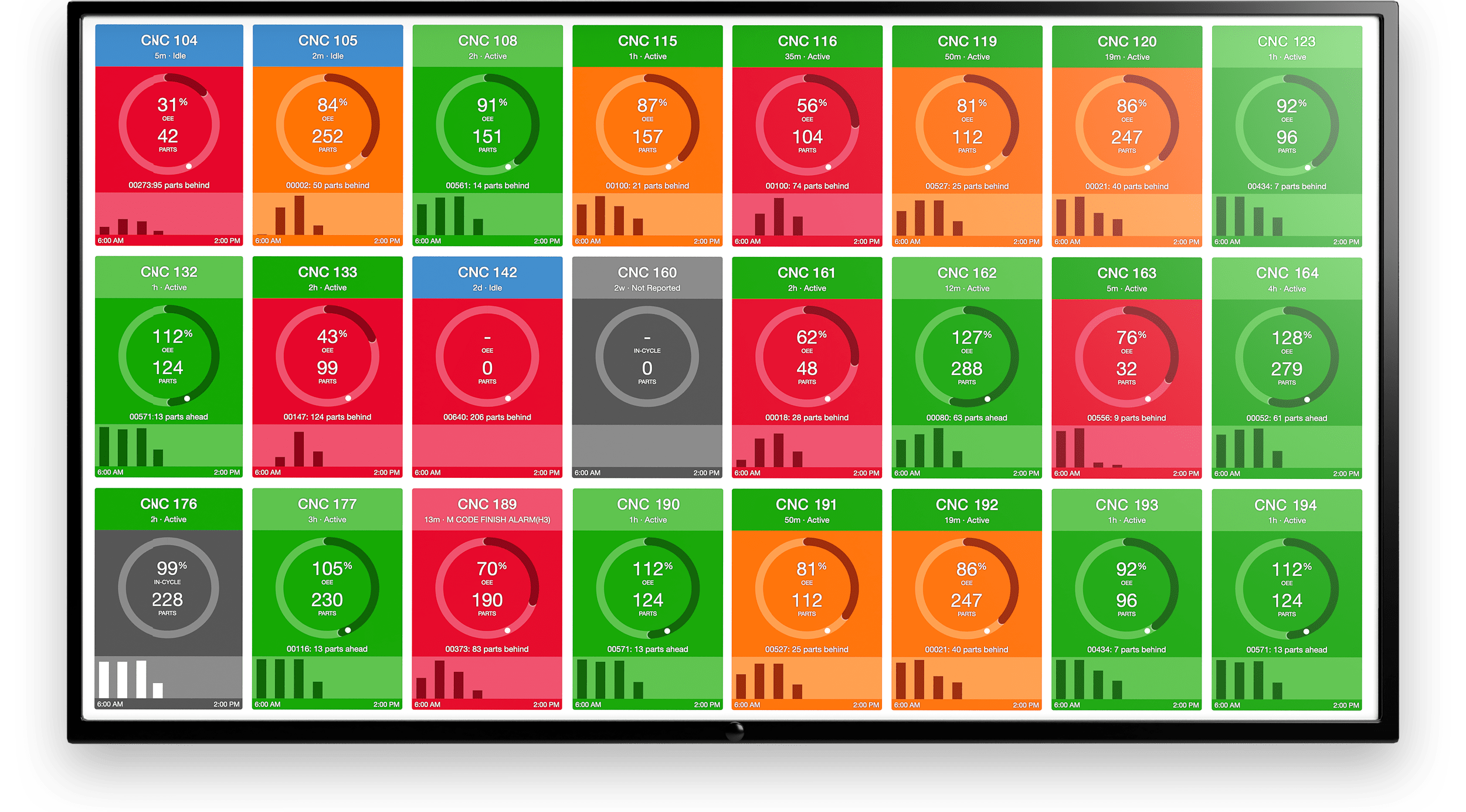




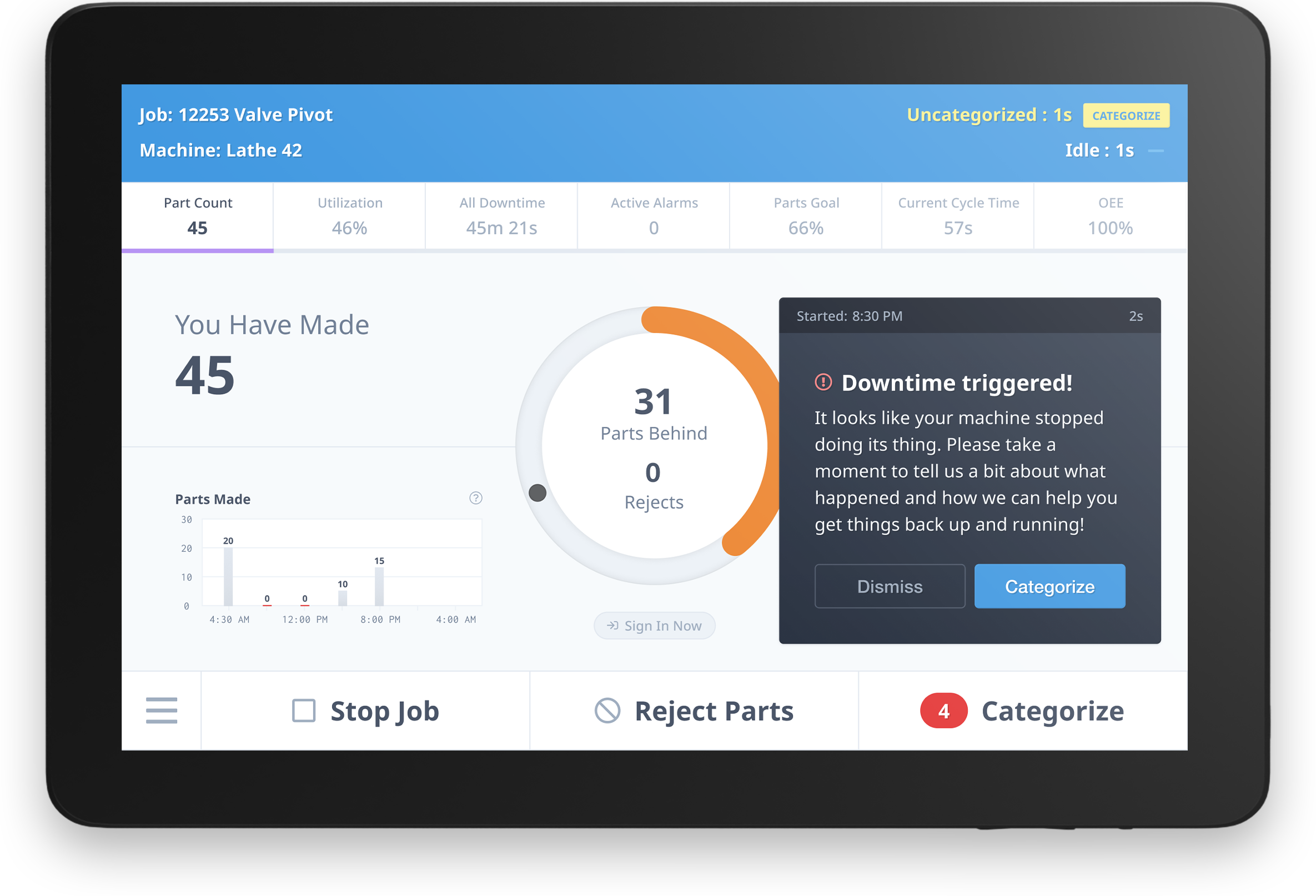

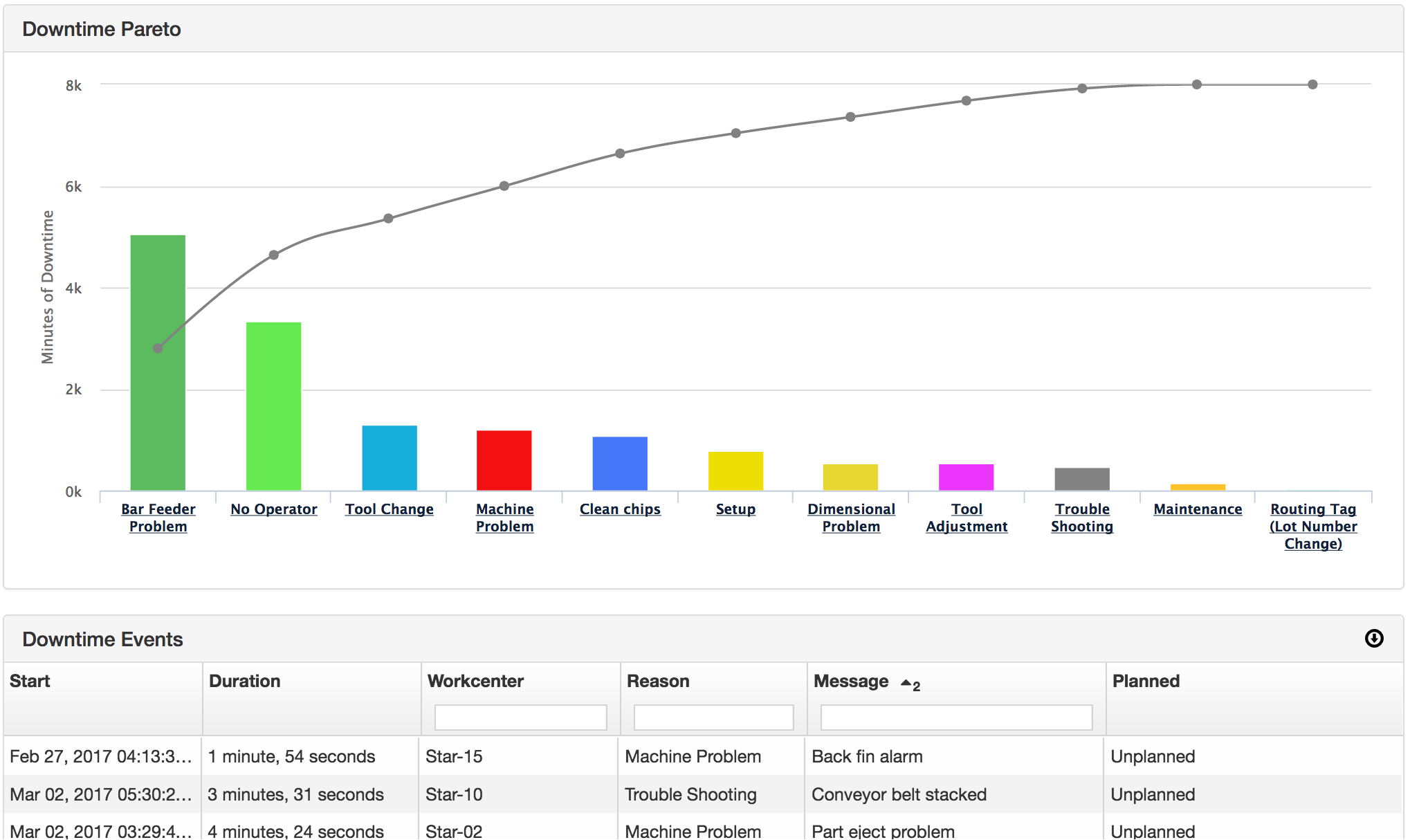
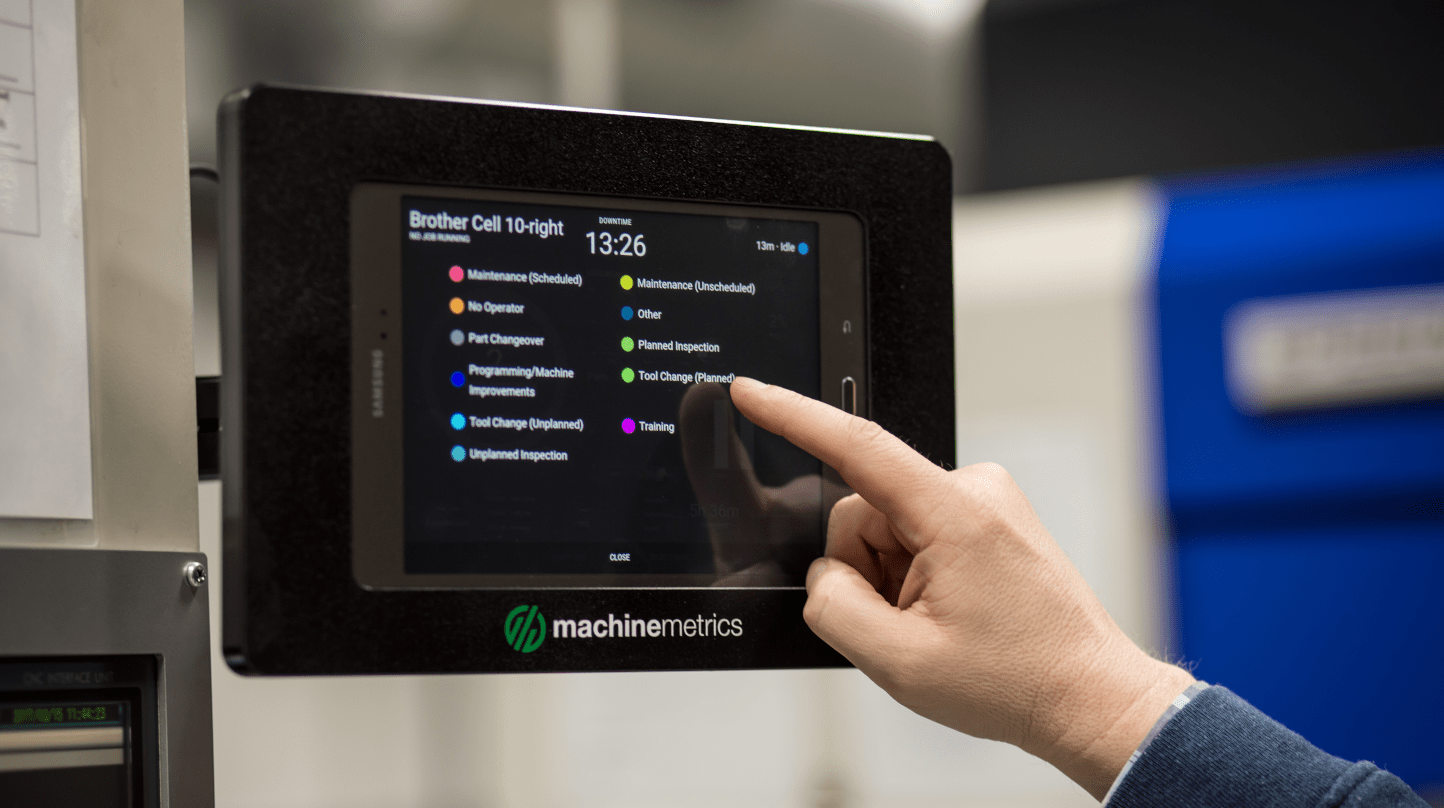
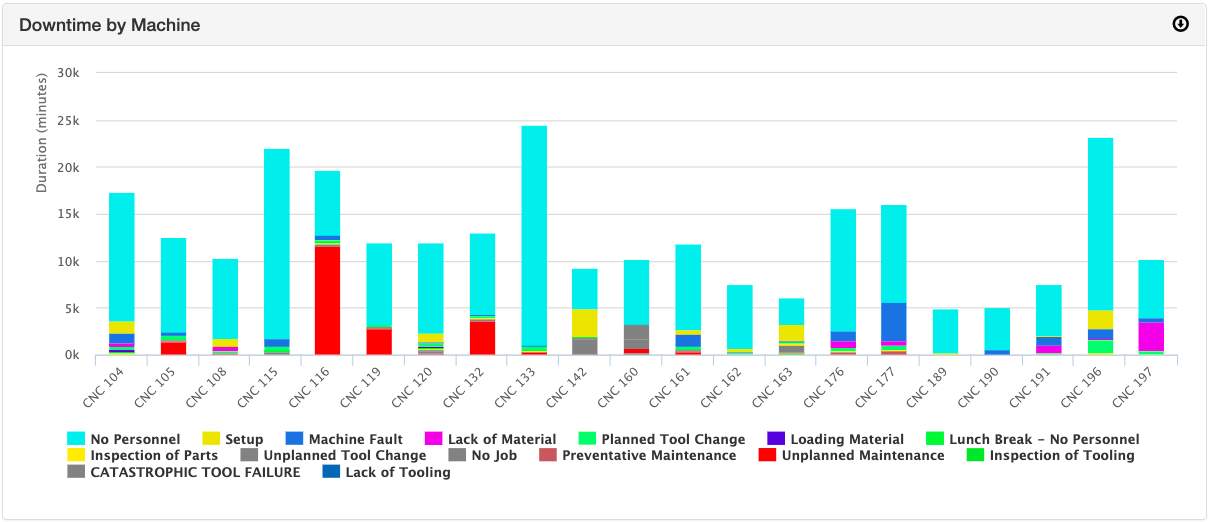
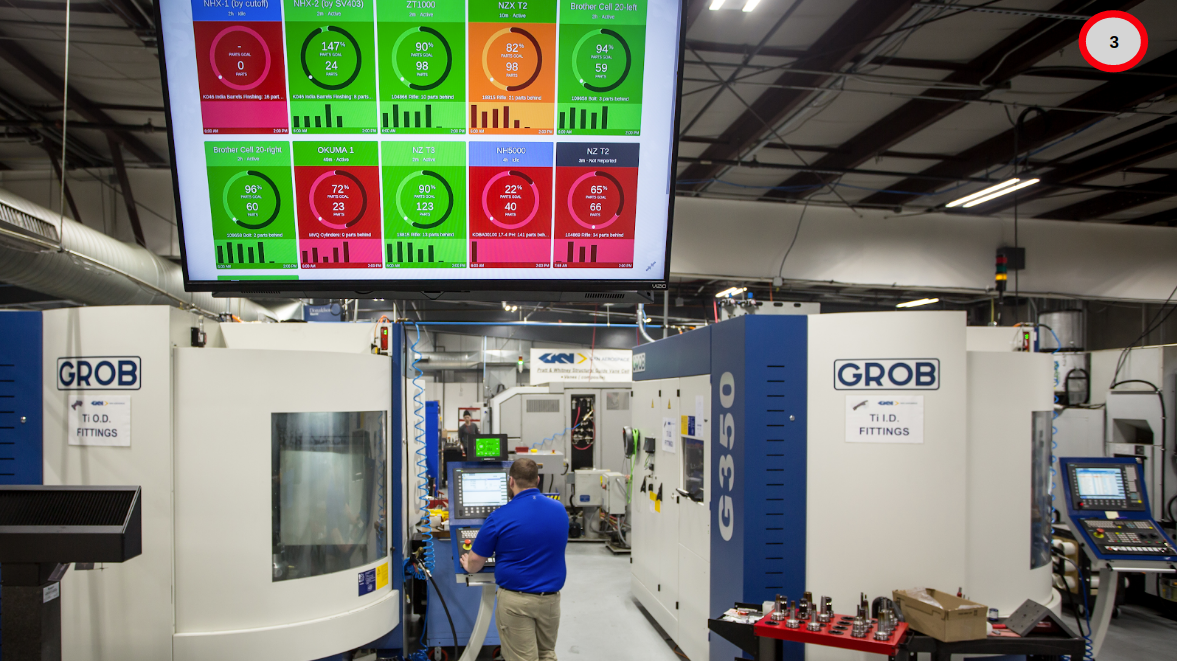
Comments